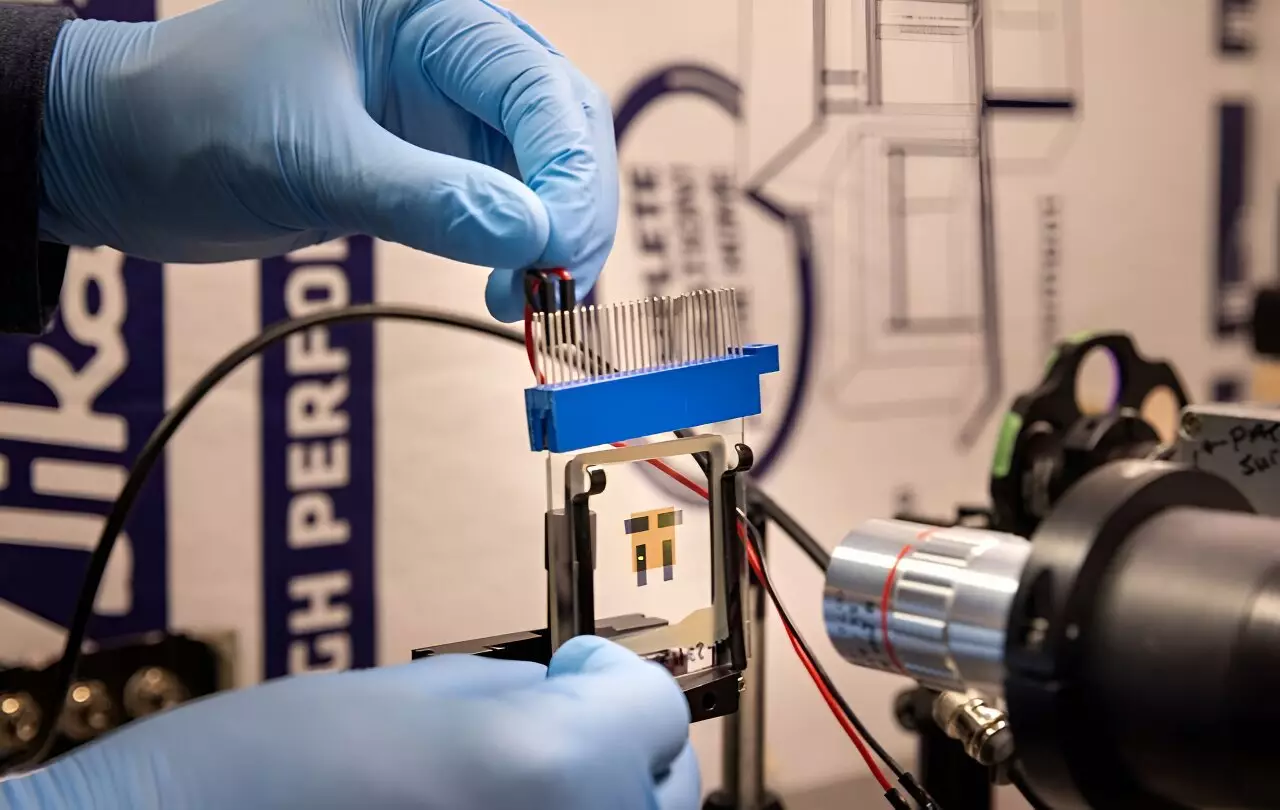Recent advancements in technology have consistently pushed the boundaries of what is possible in various fields, and night vision devices are no exception. Traditional night vision goggles, often heavy, cumbersome, and reliant on complex mechanisms to provide clarity in low-light conditions, may soon be eclipsed by cutting-edge organic light-emitting diode (OLED) devices. Research led by the University of Michigan has unveiled a new type of OLED system that provides not only a lightweight alternative to existing night vision technologies but also enhanced functionality. Published in the renowned journal Nature Photonics, this innovation could redefine how we observe the world in darkness.
The conventional night vision systems currently in use are primarily based on image intensifiers that transform near-infrared light into visible images. This traditional approach involves intricate processes where incoming light photons are converted into electrons, which are then accelerated through a vacuum and funneled through narrow channels. This mechanism, while effective, is inherently heavy and requires high-voltage operation, making it less practical for prolonged use, particularly in dynamic scenarios or for users needing mobility and extended periods of wear.
In addition to their weight and complexity, current night vision devices suffer from diminished battery life due to their high power consumption. As such, the quest for an alternative solution that balances efficiency with performance has led researchers to delve into OLED technology, which offers a promising pathway forward.
The OLED Breakthrough
The driving force behind this technology revolution lies in a newly developed OLED that facilitates an impressive light amplification of over 100 times without the bulkiness associated with traditional systems. Christopher Giebink, a professor at the University of Michigan, emphasizes the thinness of the OLED stack, which measures less than one micron — a fraction of the thickness of a human hair — demonstrating an extraordinary feat in miniaturization without sacrificing performance.
The OLED’s design includes a photon-absorbing layer that effectively converts infrared light into electrons, followed by a layered stack that transduces these electrons into visible light. This multi-layer, positive feedback design enables a remarkable efficiency whereby ideally, for every electron processed, five photons are emitted, vastly increasing the output light. This efficient exchange signifies a landmark achievement over previous OLED technologies that lacked the gain, where the output was merely equivalent to the input.
The Role of Memory in Night Vision Applications
Unique to the new OLED is its capacity for a memory effect, known as hysteresis. Unlike typical devices that respond solely to real-time illumination, this innovative OLED retains information about previous light intensity and duration even after the light source has been removed. This ‘memory’ opens doors to advanced computer vision applications where machines need to interpret and process incoming signals in a manner akin to human perception.
This capability could set a new paradigm in image processing by mimicking neuronal connections in the brain, whereby the device can utilize stored information to refine image classification and interpretation without the need for an external computing unit. The implications for this technology stretch beyond night vision applications, edging towards sectors such as artificial intelligence and machine learning, where understanding past input is key.
The implications of this OLED technology go far beyond just enhancing night vision capabilities. As researchers continue to refine and optimize the design, even higher levels of light amplification may materialize, rendering future devices even more powerful while remaining lightweight and more affordable than their predecessors.
Moreover, the compatibility of fabricating these devices using readily available materials and established manufacturing methods suggests that scaling up production could be feasible. This scalability might lead to the development of commercial products that cater to a broader audience, from recreational users to professionals in the military, security, and surveillance sectors.
The evolution of night vision technology spearheaded by the University of Michigan’s research is paving the way for a future where bulky goggles may soon be replaced by sleek, efficient OLED glasses. The intersection of thin-film technology, memory capabilities, and the potential for scalability heralds a new era not just for night vision systems, but also for various applications across fields that depend on enhanced visual perception. As research in this realm continues to advance, the ability to see in the dark may become more accessible and functional, representing a significant leap in our commitment to harnessing technology for improved human experience.


Leave a Reply